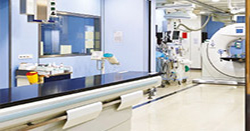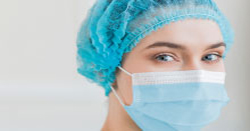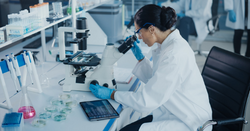New Invention
Sleep Apnea Treatment Drop

Normal breathing open airway,
Tongue relaxed
(failing slightly back)

Snoring partially blocked airway,
When the constrincted airway
vibration

Fully blocked airway


Sleep is of great importance for a healthy life, a good night’s sleep is a necessary factor for daily energy, morale, and happiness. Sleep has stages and it starts with a few minutes of light sleep. Before entering deep sleep, there is another stage and finally, the REM stage, deep sleep. This sleep cycle typically lasts 90-110 minutes and repeats 4-5 times. In sleep apnea syndrome, the patient constantly returns from the REM stage of sleep to the initial stages and even to wakefulness due to the cessation of breathing, and essentially cannot sleep deeply.
The most common sleep disorder is the inability to enter deep sleep and sleep apnea, where, on average, one transitions to light sleep and wakefulness 30 times per night. This condition can lead to fatigue, weakness, suffering, and sadness due to the body not resting and not getting enough oxygen. Sleep apnea can be defined as the cessation of breathing during sleep. In sleep apnea syndrome, temporary choking that lasts a few seconds can occur during sleep. During these choking moments, the oxygen level in the blood drops, causing the brain to wake up. The brain wakes the body to signal the cessation of respiratory functions.
Sleep apnea can be caused by a problem in the nervous system or a blockage in the respiratory tract. Sometimes both of these conditions are present together. In evaluating this disease, not only the cessation of breathing, apnea, but also the reduction of breathing is taken into account. Problems like high noise snoring, fatigue, excessive irritability, concentration disorder, and morning headaches can emerge as consequences of sleep apnea. Depending on the severity of the disease, patients may experience one, several, or all of these problems simultaneously.
According to the 2022 research results of the American AASM (American Academy of Sleep Medicine), diseases are systematically shown to be linked to sleep apnea. The foremost among these are metabolic disorders, stomach reflux, heart attack, stroke, pulmonary embolism, hypertension, cardiac arrhythmia, asthma, liver fat, neonatal jaundice, sudden deaths, and premature aging.
The obvious connection of this disease is to psychological illnesses. The same research shows that a large number of work and traffic accidents are caused by this disease. Based on credible research, it is a cause of Alzheimer’s, Parkinson’s, neurodegenerative diseases, immunology, and rheumatologic diseases. It’s a disease that affects all cells of the body. So far, no drug treatment has been made for this disease, and only 40-50% of the effects of the disease can be controlled with the use of a CPAP machine. In some cases, reversible surgical intervention is applied.
According to a 2021 article published at the University of Maryland in America, this disease incurs direct and indirect costs of $150 billion, and 30% of adults in America are affected by it. Obstructive sleep apnea is a significant and common disease characterized by repeated obstructions of the upper airways during sleep. These patients are continuously exposed to airway blockages and snoring. The primary pathology of this disease is considered to be due to edema and inflammation in the walls of the upper respiratory tract.
The plant-based drug invented, consisting of Horse Chestnut and Horsetail, with substances AESCIN and RUTIN, heals the edema and inflammation of the upper respiratory tract, leading to the treatment of the disease. This invention is the first in the world to be produced as an inhaler spray for local use in the nose, according to the method mentioned in the description. This combination, by locally affecting the main pathological site of the upper respiratory tract, namely the surface causing the closure of the respiratory tract during sleep due to edema and inflammation, helps to reduce the pathology of the disease by decreasing tissue edema, having positive effects on the vascular wall, and reducing existing inflammation, and consequently improves symptoms. This also contributes to the reduction of all secondary diseases that develop as a result of night hypoxia caused by sleep apnea. These include cardiovascular diseases, neurological diseases, mental illnesses, respiratory diseases, digestive system diseases, hormonal diseases, hematological diseases, rheumatologic diseases, immunological diseases, kidney diseases, and other health problems that develop secondarily to this disease. Additionally, it reduces the damage caused by hypoxia-induced aging of tissues and the body, and patients experience a better sleep experience as sleep apnea and snoring improve, and secondary symptoms such as snoring, fatigue, insomnia, anxiety, and depression improve.
In standard clinical tests, applications on more than 100 patients so far have shown an improvement of more than 90% in the disease. Particularly in patients with depression and anxiety, using only this nasal spray shows a 70% improvement in 2-3 weeks.
We are seeking investors to collaborate with our company, ACTO GmbH.
If you’re interested in joining us on this venture, we’d love to discuss potential partnerships. Our goal is to innovate in apnea therapy, and we believe that partnering with investors who share our passion could help us achieve remarkable progress. If you’re passionate about healthcare innovation and looking for an impactful investment opportunity, we’d be thrilled to explore possibilities together.














